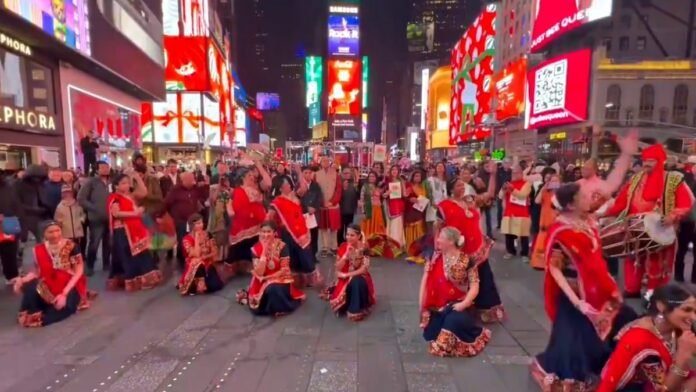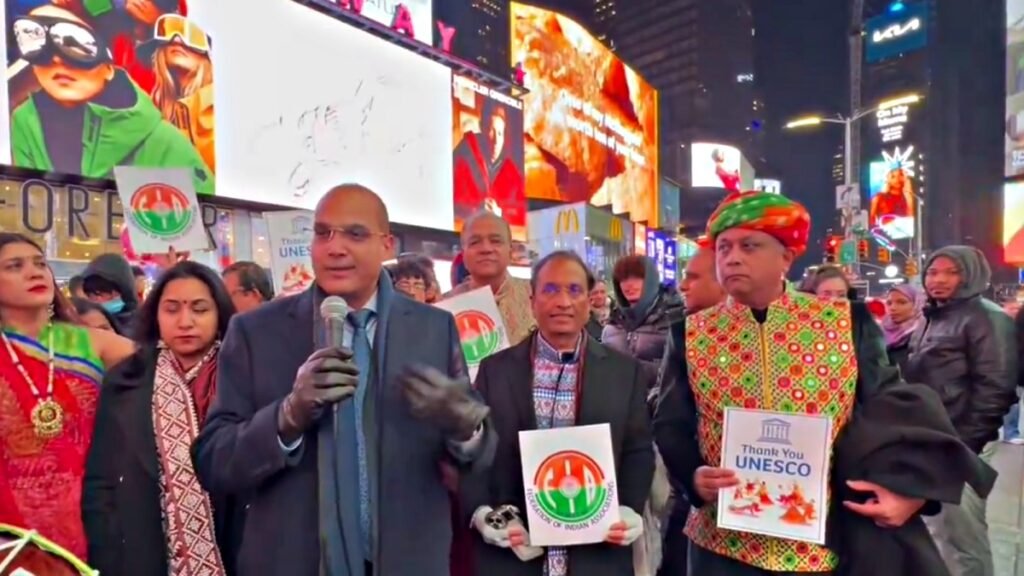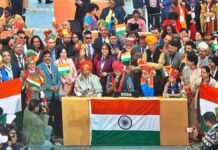
New York: Times Square, the iconic landmark of New York City, witnessed a colorful and festive display of Garba, a traditional folk dance from Gujarat, India, on Thursday night. The Indian-American community organized the event to celebrate the inclusion of Garba in the UNESCO Intangible Cultural Heritage list earlier this week.
Garba is a dance form that honors the feminine aspect of divinity, especially Goddess Durga, who is worshipped during the nine-day festival of Navratri. Garba derives its name from the Sanskrit word for womb, symbolizing the cycle of life and death. The dancers form a circle around a clay lamp or an image of the goddess and move in rhythmic steps, accompanied by singing and musical instruments.
The UNESCO Intergovernmental Committee for the Safeguarding of the Intangible Cultural Heritage, which met in Kasane, Botswana, for its 18th session, decided to inscribe Garba on the Representative List of the Intangible Cultural Heritage of Humanity on Monday. The committee praised Garba for its “contribution to social cohesion, intercultural dialogue, and respect for cultural diversity”.
The Indian-American community welcomed the recognition news, which decided to showcase Garba in Times Square, the heart of the Big Apple. Despite the chilly weather, hundreds of people from the New York tri-state area, including New Jersey, gathered in their traditional Garba outfits and danced with joy and enthusiasm. The event also attracted tourists and bystanders, who joined in the fun or captured the spectacle on their cameras.

Dr Varun Jeff, Acting Consul General of India in New York, addressed the crowd and congratulated them on the historic occasion. He said that Garba was a proud representation of Gujarat’s rich culture and heritage, and thanked UNESCO for acknowledging its value and significance.
Ankur Vaidya, President of the Federation of Indian Association (FIA), which organized the event, said that the Indian-American diaspora was passionate about Garba and its ancient art form. He expressed his gratitude to UNESCO for recognizing Garba and hoped it would inspire more people to learn and appreciate it.


















































